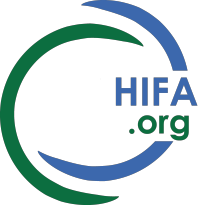Global Health Research and Policy: Maternal and child mortality in the Middle East and North Africa between 2000 and 2020
Dear colleagues,
We are delighted to share the latest publication from Global Health Research and Policy with the HIFA community, in the hope of fostering academic exchanges and promoting the application of research findings in global health practice.
Paper Title:
The maternal and child mortality in the Middle East and North Africa between 2000 and 2020: the role of health financing
Paper Link:
https://doi.org/10.1186/s41256-025-00459-1
Abstract:
Background
Improving maternal and child health (MCH) outcomes is a critical agenda item in global development. Health financing factors play a crucial role in affecting MCH outcomes, which vary substantially in the Middle East and North Africa (MENA) region. This study aims to examine the trends in maternal mortality rate (MMR), infant mortality rate (IMR), and under-5 mortality rate (U5MR) in the MENA region and the potential impact of health financing factors on them.
Methods
We compiled data on MCH mortalities and potential determinants, including health financing factors, for all countries in the MENA region from 2000 to 2020. We calculated the growth rate of mortalities and explored the association between mortality rates and potential determinants using fixed-effects models.
Results
The average MMR, IMR, and U5MR showed an overall descending trend in the region. Middle-income countries experienced the highest reduction rates (3.46–3.73%), followed by high-income countries (2.97–3.02%) and then low-income countries (0.33–0.92%). Gross domestic product (GDP) per capita, current health expenditure (CHE) per capita, urbanization, and fragility were consistently associated with all three mortality rates (p < 0.05). GDP elasticity of MMR, IMR, and U5MR was estimated at − 0.121, − 0.076, and − 0.138, respectively, while corresponding CHE elasticity was − 0.319, − 0.275, and − 0.225, with a larger magnitude. Fragility was positively associated with higher MMR, IMR, and U5MR. Additionally, government health spending, air pollution, and immigration were associated with MMR, but not with IMR and U5MR.
Conclusions
Low-income countries in the MENA region, with the highest mortality rates, face greater challenges in reducing MCH mortality rates, necessitating tailored interventions to expand evidence-based MCH services and/or reinforce their effectiveness. Total investment in health plays a critical role in reducing mortality rates. Efforts to build a sustainable health financing system are key to improving MCH outcomes. Besides, endeavors to address broader socioeconomic factors and political stability should be prioritized in countries with major concerns of poverty and conflict.
About Global Health Research and Policy
Global Health Research and Policy is an open access, multidisciplinary journal that publishes topic areas and methods addressing global health questions. These include various aspects of health research, such as health equity, health systems and policy, social determinants of health, disease burden, population health and other urgent and neglected global health issues.
Global Health Research and Policy aims to provide a forum for high quality researches on exploring regional and global health improvement and the solution for health equity.
We believe this article may bring valuable insights to the HIFA community. We welcome you to read, share and engage in discussions on the research content.
Best regards,
Bingqing Xi
Inernational Coordination Editor
Global Health Research and Policy Editorial Office
HIFA profile: Bingqing XI is an International Coordination Editor at Wuhan University, in China. Profesisonal interest: Global Health. Email: bingqing.xi AT whu.edu.cn

